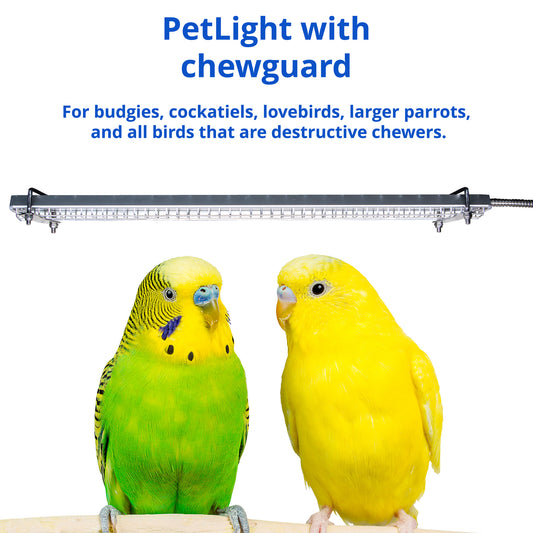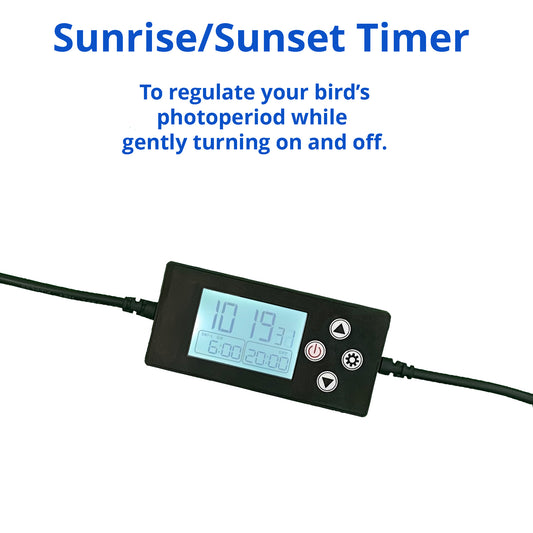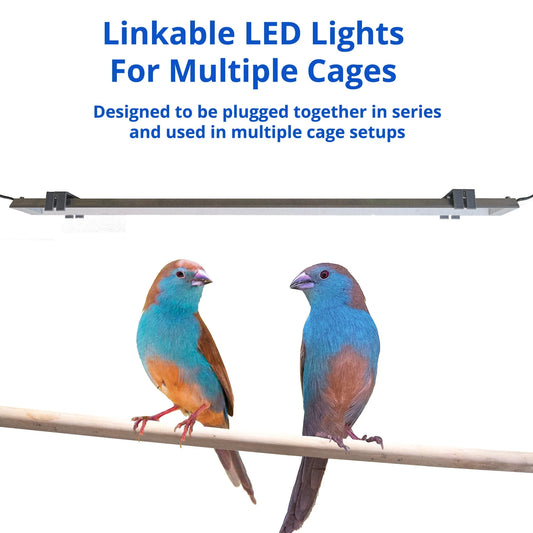Should You Cover Your Bird’s Cage at Night?
Share

Bird owners often wonder whether they should cover the cage at night. It’s a common practice, but is it necessary? The answer depends more on your lighting setup than on the cover itself.
What Matters for Birds at Night
In nature, birds wake with the sun and wind down as daylight fades. Their daily rhythm is shaped by light, not clocks. When kept indoors, birds no longer have access to natural sunrise and sunset cues. Instead, their internal clocks are guided entirely by the lighting you provide.
The foundation of a bird’s indoor routine is a consistent cycle: ideally 10–12 hours of bright, flicker-free light followed by a clear transition to darkness. This light cycle helps guide rest and activity, encouraging a natural daily rhythm that supports comfort and behavioral balance.
So, is a cage cover essential for creating this rhythm? Not necessarily.
When Is a Bird Cage Cover Helpful?
A cage cover can serve several useful purposes, especially in rooms where you can’t fully control the environment:
- It blocks unwanted ambient light (TVs, computer screens, hallway lights)
- It creates a sense of enclosure and routine in busy or shared spaces
- It helps reinforce the start of the bird’s nighttime routine
However, a cover is just one tool. It doesn’t replace the need for thoughtful lighting, especially during the day.
💡 Why Lighting Routine Matters More Than the Cover
Some households use a cage cover as a workaround for inconsistent lighting. But a cover doesn’t solve the root problem: birds still need proper lighting during the day and a predictable transition to night.
Here’s what matters most:
- Provide 10–12 hours of full-spectrum, flicker-free light daily
- Mount lights directly on or above the cage to ensure proper exposure
- Stick to consistent “on” and “off” times every day, including weekends
- Ensure that lights turn off fully in the evening, ideally mimicking sunset
While some birds may tolerate low light, experts generally recommend nighttime to be as dark as possible — and to remain consistently dark — to support uninterrupted rest and natural rhythms.
The Limitations of Room Lighting
Even bright rooms often leave bird cages in partial light. Distance, shadows, and window placement make it hard to deliver consistent brightness inside the cage itself.
That’s why functional bird lighting — like cage-mounted fixtures — is so important. These lights target the space that matters most: where your bird spends the majority of its time. This direct lighting helps your bird interpret the time of day clearly, reducing confusion or overstimulation.
When lighting is reliable and rhythm-focused, many birds settle naturally in the evening - no cover needed.
Other Considerations: Flicker and Safety
Birds are more sensitive to flicker than humans. Lights that seem steady to us may appear erratic and stressful to them. That’s why high-quality bird lights should be flicker-free and use safe, low-voltage systems with secure mounts and chew-resistant cables. These features ensure that your bird’s lighting doesn’t just look good, it performs safely and predictably every day.
Final Thoughts: Cover Optional, Routine Essential
Covering the cage can be a helpful part of your routine, especially if your space has inconsistent lighting or nighttime disruptions. But it isn’t essential if your lighting setup already supports a healthy rhythm.
Birds respond best to structure: bright, direct light during the day and clear, gentle transitions to rest at night. A functional light — purpose-built for birds — offers more than brightness. It offers consistency, rhythm, and comfort, all without relying on decorative fixtures or household bulbs.
A cage cover can help, but it’s no substitute for lighting that supports the natural world your bird instinctively understands.



